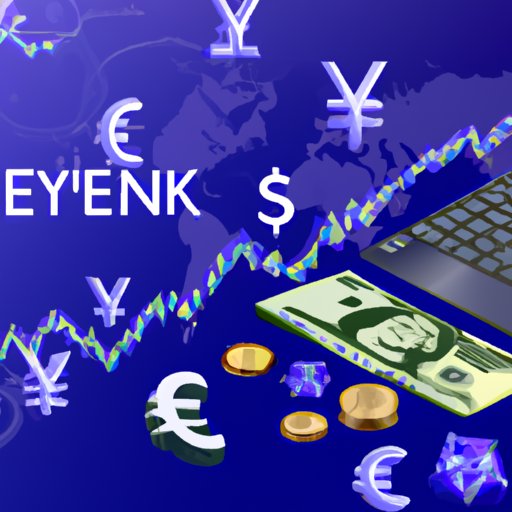Introduction
Currency investing is an attractive option for those seeking to diversify their portfolios and capitalize on the fluctuations of global economies. By carefully researching potential currencies and understanding the risks associated with currency trading, investors can develop strategies to maximize their returns. In this article, we will explore the various methods of investing in currency, from researching potential currencies and setting up a trading account to learning about hedging strategies and utilizing automated currency trading systems.
Researching Currencies
The first step in investing in currency is to evaluate potential currencies. Consider factors such as the currency’s purchasing power and stability, the central bank’s monetary policy, and the economic environment in which the currency is traded. Researching these factors will allow you to identify the most promising currencies to invest in. It is also important to understand currency pairs, which are two different currencies traded against each other. For example, the US dollar/Japanese yen pair (USD/JPY) is one of the most popular currency pairs.
In addition to researching potential currencies, it is essential to analyze economic and geopolitical events that may affect currency prices. For instance, political instability or natural disasters can cause significant changes in a currency’s exchange rate. Keep up with news from reliable sources such as the Central Bank of a relevant country, Bloomberg, Reuters, and The Wall Street Journal to stay informed about events that may affect your investments.

Setting Up a Trading Account
Once you have identified the currencies you would like to invest in, the next step is to set up a trading account. There are two main options for setting up a trading account: online brokers or currency exchanges. Online brokers provide access to multiple markets and offer research tools, charts, and news feeds. On the other hand, currency exchanges are more suitable for large transactions, as they offer lower fees and more secure transactions. Whichever option you choose, follow the instructions provided by your broker or exchange to complete the setup process.

Understanding the Risks of Currency Investing
It is important to understand the risks associated with currency investing before committing any capital. Forex markets are highly volatile and can experience significant changes in a short period of time. Additionally, margin and leverage can amplify losses when trading on margin, so it is important to use them responsibly. Lastly, counterparty risk should be taken into consideration, as there is always a chance that the other party involved in a transaction may default on its obligations.
Learning About Currency Hedging Strategies
Currency hedging is a strategy used to protect against price movements in a particular currency. Options, futures, and other derivatives can be used to hedge against currency movements. For example, a currency futures contract allows investors to buy or sell a specific amount of a currency at a predetermined price on a future date. This can be a useful tool for managing currency exposure and minimizing losses.

Considering Automated Currency Trading Systems
Automated currency trading systems use algorithms to identify trading opportunities and execute trades without human intervention. They can provide investors with a number of advantages, such as faster execution, lower transaction costs, and improved accuracy. However, it is important to select a reliable system, as some automated trading systems have been known to generate losses instead of profits.
Utilizing Technical Analysis
Technical analysis is a method of analyzing charts and indicators to identify entry and exit points in the currency market. While fundamental analysis looks at economic and geopolitical events, technical analysis focuses on price movements and patterns. By learning how to interpret charts and indicators, investors can identify potential trading opportunities and develop strategies to maximize their returns.
Monitoring the News
In addition to technical analysis, it is important to keep up with economic and geopolitical events that may affect currency prices. Pay attention to news related to central bank policies, trade agreements, and political developments. Reassess your positions accordingly, as these events can have a significant impact on the currencies you are invested in.
Conclusion
Investing in currency can be a profitable endeavor if done correctly. By doing your research, setting up a trading account, and familiarizing yourself with hedging strategies, automated trading systems, technical analysis, and news events, you can increase your chances of success. For further reading, consider resources such as “Currency Trading for Dummies” by Mark Galant and Brian Dolan or “Forex Trading: A Beginner’s Guide” by John Jagerson and S. Wade Hansen.
(Note: Is this article not meeting your expectations? Do you have knowledge or insights to share? Unlock new opportunities and expand your reach by joining our authors team. Click Registration to join us and share your expertise with our readers.)
